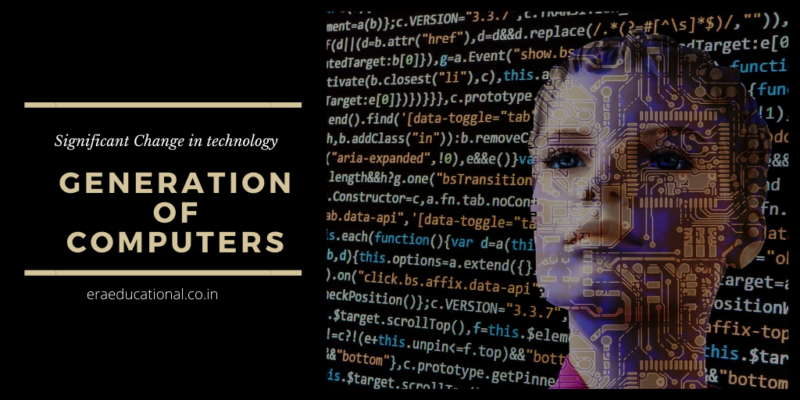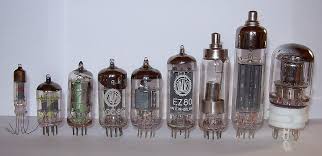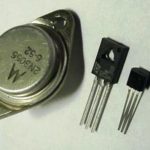Whenever there is a significant change in the technology, due to which the cost and size of the computer is reduced and the performance increases, It is considered as New Generation of Computers.
The digital Computers can be classified into Generations, on the basis of Hardware and software evolution which makes the computer more and more powerful, smaller, cheap, and compatible.
There are five generation in Digital Computer Systems. But in 2020 the sixth generation of computers also introduced Now.
First generation of computers
During 1945 to 1955 the First generation computer used Vacuum tubes as switching technique. Vacuum tube is like an electric bulb so it was not durable and they produce lots of heat.
Because the size of vacuum tube is bulky so the first generation computers was very big in size.
Batch operating system was implemented in this generation and the programming language used in this generation is Machine language.
They have slow input, output and processing with limited storage.The punch card. magnetic tape and Paper tape was used as Input and output Devices.
The magnetic drum used as storage. These computers used mainly for scientific purposes. Some of first generation Computers was ENIAC, EDVAC & EDSAC ENIAC – Electronic Numerical Integrator and Calculator EDSAC- Electronic EDVAC- Disadvantages of first generation-
- Very Large Size computer
- Very Costly
- Consume Lots of electricity
- Produce Heat
- High Maintenance
- Slow in speed
Second Generation Computers
Second Generation Computer The use of transistors in place of vacuum tubes made the size of computers much more compact than before.
As transistor is a semiconductor device it is more reliable than vacuum tubes, the second generation computers became faster and cheaper.
Note: Inventor of Transistor were William Shockley, John Bardeen and Walter Brattain.
Magnetic core memory were used as primary memory while magnetic tape and magnetic disks as secondary memory.
The programming languages Assembly language and High level Language Fortran,COBOL etc were used. The Batch operating system and multi-programming operating System were Implemented in second generation computer. Examples are
- UNIVAC
- CDC
- IBM
Features of second generation computers
- Produce less heat than first generation
- Smaller Than first generation
- supported Assembly and high level language
- start using commercially
- also used in Inventory control
Third Generation Computers
The third generation of computers started as soon as the integrated circuit was invented. Integrated Circuit (IC) is a set of electronic circuit on a small chip of semiconductor material that is silicon.
The advantage of IC over discrete circuit is low cost and high performance. A single IC can have many components like transistor, capacitors or resistor on a single chip.
The third generation computer used Small scale Integration (SSI) and Medium Scale Integration (MSI) of Integrated circuit. These IC increased the speed and efficiency of computers.
SSI circuit contains upto 10 transistors, While MSI circuit may have hundreds of transistors.
Instead of punched cards the user interacted through keyboard and monitors.
The Operating system in third generation allowed the devices to run many different applications at one time with a central program that monitored the memory. Computer became accessible to mass users.
Features of Third Generation Computer
- Integrated circuit technology was used.
- Speed of processing increases.
- Computer were smaller and portable than previous generations.
- Commercial production became easier and cheaper.
- Keyboard and monitors were used for input and output respectively.
Fourth Generation Computers
The VLSI technology of Integrated Circuit used in fourth generation of computers. Because Very Large Scale Integration make possible to Millions of components on a single chip also called microchips.
The Invention of first Microprocessor started the fourth generation of computers. The Intel 4004 chip developed in 1971, located all the components of the computer -from the central processing unit and memory to input/output controls on a single chip.
In 1981, IBM introduced its first computer for the home user. In 1984 Apple introduced the Macintosh. Microprocessors also start using in many devices other than desktop computers.
Fourth generation computers also equipped with Mouse and handheld devices. The GUI Operating System made easy to use computer.
Features of Fourth Generation Computers
- Microprocessor technology is used.
- Smaller in size, portable reliable computers allow Interconnection between themselves to form a network.
- Network enables data and resource sharing
Fifth Generation of Computers
The fifth generation computer based on Artificial Intelligence such as voice recognition. This Technology makes computer behave like humans.
Artificial Intelligence Include: Experts System AI computers makes decision in real life situations. for example The expert systems helps doctors to diagnose disease based on symptoms.
AI can detect Natural Language of human, or can play any game with Human. Robotics AI can see, hear and react to other sensory stimuli.
The use of parallel processing and super conductors is helping to make artificial intelligence a reality. Quantum computation and molecular nanotechnology will radically change the face of computers.
The goal of fifth generation computing is to develop devices that respond to natural language input and are capable of self learning and self organisation.
Sixth Generation of computers
The sixth generation also introduced voice recognition. Improved technology allows the computer to take dictation and recognize words.
Computers have the ability to learn via a variety of advanced algorithms. The use of nanotechnology is a characteristic of sixth generation computers.
The Sixth Generation of computers is different from, older generation computers in terms of size, speed and tasks that perform.
These computers are called intelligent computers based on artificial intelligence or artificial brains. Whereas, it uses the semiconductors as the raw material to its processors.
Moreover, the sixth generation takes dictation and recognizes the words. By using the voice reorganization, you can search and send the messages quickly and easily.
Although people need to speak slowly and clearly to work properly. With the 6th generation computers, the complex problem solving is possible and researches are ongoing to find the ways to solve the problems more efficiently and easily.
Sixth Generation of Computers In the military, the AI helped soldiers for unexpected problems arises in many situations around the world.
Additionally, it helps to prevent the many of world’s spy network problems, and also it can determine the actions occurring high volatile parts of the world.
In the automobile technology, robots are used for manufacturing, but the artificial intelligence is used in some cars which allow to breaking and wearing the vehicle if necessary.
Future Generation Computers
In Today’s Computer, we touch everything virtually. But, the future computers may be neurons and attains the human level intelligence.
We all have the image that the computer is a rectangular box either on desk or packet. We can think that computers are in cars or refrigerators.
Whereas, you can operate the refrigerator with your phone or communicate with a light bulb. In fact, in the coming years, your light bulb became the computer which performs operations and projects the information instead of light.
Similarly, biological computing performs the operations using DNA or RNA and understand the biotechnology as one computer.
Future Generation Computers However, the communication between the user and future computer in many ways. We can think that access your computer with voice reorganization.
The machine can predict before you ask what do you want with emotion sensing. The emotion-sensing technology can help to change the things.
We already use the gestures to control the computers. But with image reorganization technology to recognize the body motions even when you not in front of the computer screen.
In the coming future, the computers may have the pre-touch, brain interface.Nowadays computers operate by using power, semiconductors and metals but, the future computers might use the atoms, DNA and light to perform the tasks. Conclusion: Now we have used five generations of computers.
In future generation computers have the power to access things like the human brain by taking inputs in different ways. The future generation of computers performs the tasks very faster than previous generations and devices may be invisible or smaller in size




Recent Comments